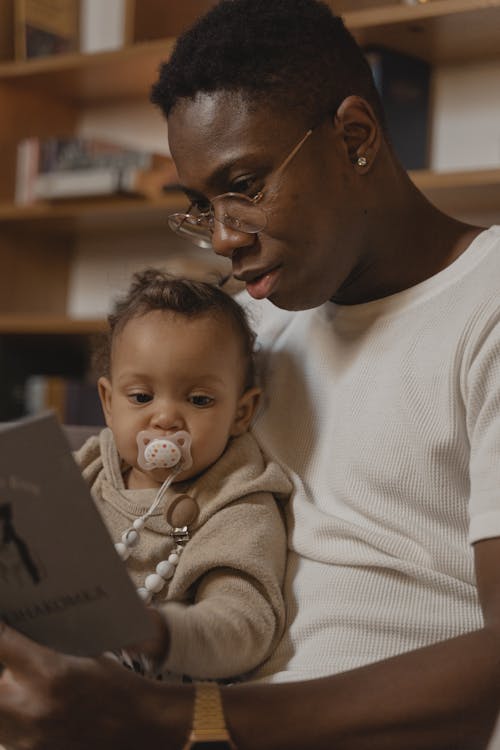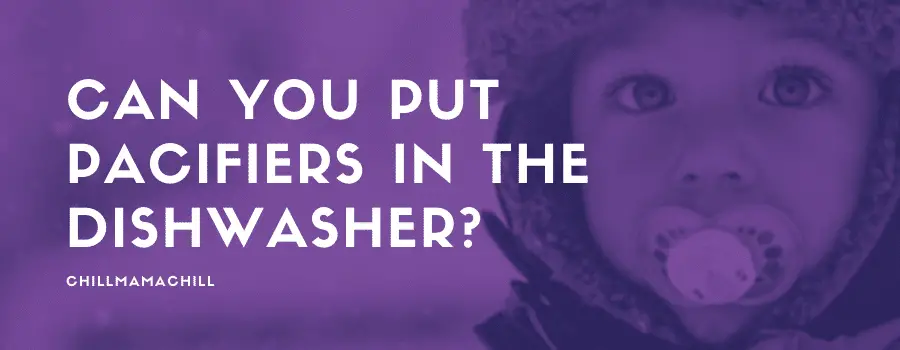Your new baby is born with an innate desire to suck. It’s how they calm down, fall asleep, and relieve toothaches. But it’s essential to keep everything your child sucks on hygienically clean and sterilized. So, can you put pacifiers in the dishwasher?
Before your baby can use a pacifier, even when new, you must sterilize it. Pacifiers are dropped, munched on, stomped on, and traded with other babies routinely. If your pacifier’s manufacturer recommends it, use a mesh laundry bag on your dishwasher’s top shelf and run the regular cycle.
Your baby’s latex pacifier may not be dishwasher safe, but that doesn’t mean there aren’t methods to keep it germ-free. Once a week, run all your child’s pacifiers through a sanitizing cycle. Do so daily if your baby or any other member of your family has been sick. Keep reading to find out how you can keep your little loved one safe while preventing sudden infant death syndrome and thumb sucking.
How Can I Keep My Baby’s Pacifier Germ-Free?
Some babies, even before birth, suck their fingers in the womb, an instinct that helps them feed and develop. When your baby sucks, it soothes and comforts them, especially if they’re anxious, helping to settle or sleep. A pacifier provides the best alternative to thumb sucking between feedings. However, you should be used alongside your cuddling and comforting.
Researchers have suggested that using a pacifier during your baby’s first year of life reduces the risk of SIDS, sudden infant death syndrome. Incorrect use of pacifiers can cause problems with teething, breastfeeding, and ear infections. Avoid tying it around your baby’s neck, sweetening, or using a homemade one as that can lead to injury or death.

Several washes daily and a biweekly sanitization should suffice if your kids are at home most of the time. Every time it hits the ground it is handled with grubby hands or given away as a peace offering is enough for a thorough wash.
How Can I Ensure the Pacifier I Give My Child Is Safe and Germ-Free?
At any point when your baby begins sucking on a pacifier, it’s necessary to keep a clean one at hand. Dirty or broken pacifiers are a hazard to your child’s wellbeing. It’s also essential that you shouldn’t lick your baby’s binky to clean it, as you can transfer germs from your mouth to theirs.
To prevent dirt and bacteria from making your baby sick, keep their pacifier clean and sanitized. If the thing comes into contact with a tabletop, floor, car seat, or carpet, consider it a germ carrier. Sterilizer it before pushing it back into your child’s eager mouth. Dirty pacifiers are suspects when it comes to spreading thrush, a painful fungal infection that causes uncomfortable white patchy sores in your tot’s mouth.
Guidelines to Use a Pacifier with Your Child Safely
- Talk to your pediatrician or lactation specialist if you want to start a newborn on a pacifier. Other than sick or premature babies, pacifiers are recommended when breastfeeding picks up and is regularly going.
- Before you give your baby a pacifier, check to see that they want to suck and feed them first if they’re hungry. Pacifiers should never replace feeding, and you should try to solve your child’s problem first.
- Sterilize the pacifier using a dishwasher, microwave, or a pot of boiling water, leaving it in for at least five minutes. You can clean it after each use with hot soapy water. Always make sure it’s sufficiently cooled down before you give it to your baby.
- Avoid giving your baby a pacifier right after taking medications such as antibiotics, vitamins, or pain relievers. Chemical substances in these drugs can break down a pacifier’s materials. Always check to see if there are tears or cracks on pacifiers before offering your child, and throw these out.
You should never dip your baby’s pacifier in honey or sugar as that affects their teething. It can also cause botulism. That’s a type of food poisoning. Irrespective of how frequently you’ve been using one, remember to replace pacifiers after two months of use.
How Often Should You Clean or Sanitize Your Baby’s Pacifier?
If your baby’s pacifier is made from one piece of silicone, pop it in the dishwasher at any time. Using a hot water cycle, place pacifiers in a mesh laundry bag or a silverware holder if your machine has one. The binky will be clean of germs while dirt is completely removed. You can air dry or use your utensil washer’s dryer facility.
If your infant was born premature, and when they’re less than three months old, clean and sterilize their pacifier at least once a day. As your baby grows older, their immunity becomes stronger. You can wash your child’s pacifier with hot water and soap and get it clean enough when it’s being demanded immediately.
Drop the pacifier in a pot of boiling water for five minutes, something you should do even when you’ve unwrapped a new binky. It’s not unusual to see water stuck within the pacifier’s nipple once you’ve finished cleaning it in a dishwasher. That’s because pacifiers have a valve where air escapes when your baby clamps down on it.
It’s a ventilation system that allows the binky’s nipple to follow the natural curvature of your child’s oral cavity. You can squeeze or press the pacifier flat to get rid of excess water within its nipple and let the binky air dry when there’s still moisture trapped inside.
Conclusion
It’s advisable to often clean and sterilize your baby’s pacifier. Use a dishwasher, microwave oven, electric sanitizer, or a pot of boiling water. The frequency of your cleaning will be determined by how regularly your child uses the binky. It also depends on what age they are, and how they use it. If you are out on the move, a quick dousing with hot water and child-safe dish detergent does the trick as well.
As I said earlier, tying a pacifier around your baby’s neck is risking strangulation and SIDS. Use short ribbons that you can clip on your baby’s clothes, which are safer and available where pacifiers are stocked. Avoid fashioning a homemade pacifier from bottle caps, nipples, or other stuff as you risk choking your child.

I’m Cathrine and I’m a 39-year-old mother of 3 from Utica, New York. And I’m extremely happy you’ve come to visit my hide-out on the web. Here I post about everything related to family-life and usually it will involve babies and lessons I’ve learned over the years from experts, friends, and my own mistakes. So hopefully you will find what i write fun and informational!


